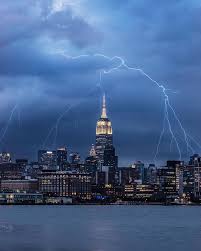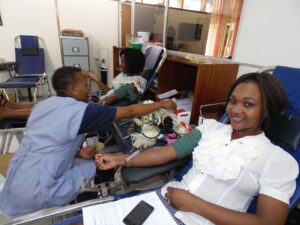CLAIM: Lightning does not strike the same place twice.
SOURCE: Account on X (formerly Twitter)
VERDICT: False
It’s the rainy season in Zimbabwe and already a number of lightning strikes have occurred and fatalities recorded.
Zimbabwe is prone to lightning strikes and was once entered into the Guinness book of records for the highest number of fatalities in one lightning strike. The incident was recorded on 23 December 1975 in the then Manica Tribal Trust Lands, now Manicaland Province.
A popular myth is that lightning does not strike the same place twice. But it does. It can be twice or three times. Or any number of times.
In December 2015, a Hwange family was chased out of their home during a storm by multiple strikes of lightning. Three separate strikes of lightning struck the family’s home in quick succession, reducing it to rubble and destroying property.
The same family had been affected by another lightning strike in 2011.
Lightning can even strike over 25 times. Famous skyscrapers like the Empire State Building in New York City are nearly guaranteed to be struck by lightning each time a thunderstorm passes overhead—but they have built-in lightning rods to make sure no damage is done to the building.

Zimbabwe’s numerous lighting strikes have led to many superstitions, with some believing that lightning can be deliberately manufactured and directed to a certain target.
Fortunately, the reality is a bit less scary and Zimbabwe’s lighting strikes are due to its geography.
Max van Olst, then a lecturer in the University of Zimbabwe’s electrical engineering department, carried out a research on the phenomenon.
The high lightning toll in Zimbabwe can be explained by the prevalence of granite outcrops all over the country. The University of Zimbabwe established that granite is radioactive and discharges gamma rays up to the cloud, thus ionising the air molecules.
Abundant granite outcrops, together with soot from the numerous kitchen huts, offer the much-needed opposite charge on the ground, while tall objects offer the easiest route for electrical discharges to steer them way to the ground.
High altitude, high humidity and high temperatures combine to affect the density of the air and thus the ease with which lightning can occur, which would explain the prevalence of lightning strikes in the Eastern Highlands.
1. Myth: A tree can act as sufficient shelter during a thunderstorm.
Fact: No. Standing underneath or near a tree is the second most dangerous place to be during a thunderstorm; the most dangerous is being outside in an open space. An enclosed building with wiring and plumbing is the safest place to be during a storm. Remember: Trees, sheds, picnic shelters, tents or covered porches will not protect you from lightning.
2. Myth: Lightning victims carry an electrical charge. If you touch them, you can be electrocuted.
Fact: Not true. The human body does not store electricity. If you are able to, you should give a lightning victim first aid and call for help. This is the most chilling of lightning myths because it could be the difference between life and death.
3. Myth: If you are trapped outside during a thunderstorm, crouching down will reduce your risk of being struck by lightning.
Fact: No. Crouching down will not make you any safer. If you are stuck outside during a storm, keep moving toward a safe shelter.
4. Myth: Lightning never strikes in one place twice.
Fact: Actually, lightning can, and often does, strike the same place repeatedly — especially if it’s a tall and isolated object. For example, the Empire State Building is hit about 25 times per year.
5. Myth: Lightning cannot strike in an area if it is not raining and skies are clear.
Fact: Not true. Do not wait until a thunderstorm is immediately overhead and for rain to begin to act. If you can hear thunder, lightning is close enough to pose an immediate threat, even if the sky above you is blue. If thunder roars, seek shelter immediately.
Conclusion
While the odds of being struck by lightning are low, the chances of lightning striking the same place twice are high. Lightning can, and often will, hit the same spot multiple times. These strikes can occur during the same weather event or on different occasions. The probability of a lightning strike increases in the rural areas because of the grass thatched structures, people sitting/lying on the ground and farmers working out in open spaces.











